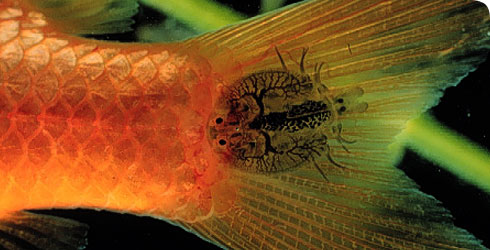Argulus japonicus
Argulus japonicus is a fish louse (a branchiuran crustacean) living as a parasite in a wide range of freshwater fish hosts.
An invasive species, originally from the Far East Argulus japonicus is now found in the wild across Europe, North America, Africa and even Australia.
Fish stocks for translocation should be checked for the presence of parasites such as fish lice.
Species detail
Argulus japonicus has a retractable poison spine in the front of its mouth.
Argulus japonicus feeds by
- injecting toxin into the host from its poison spine
- the toxin
- irritating the fish
- and beginning the process of pre-digesting the tissues
- the toxin
- taking the digesting tissue into the mouth tube using mandibles
- swallowing
-

Taxonomy
Learn about the size and structure of Argulus japonicus, find out about similar looking species as well as the wider family to which this species belongs.
-

Distribution
It is suspected that Argulus japonicus has been transported around the world unintentionally, with stocks of ornamental fish. Discover the areas of the world that this species is currently known from and find out about its feeding patterns.
-

Biology
Read about the reproductive processes and lifecycle of Argulus japonicus.
-

Behaviour
Find out more about how Argulus japonicus uses a poisoned spine and toxin to feed on fish hosts.
-

References
Get reference material for Argulus japonicus.
Images
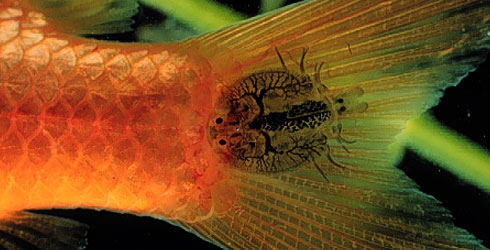
Argulus japonicus parasitises a wide range of freshwater fish hosts.
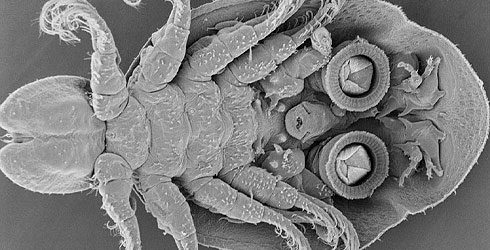
Adult Argulus attach to the host by means of a huge pair of modified suckers.
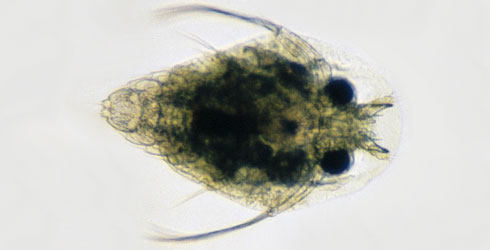
Argulus japonicus larva
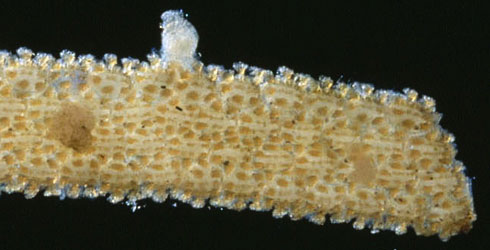
Argulus japonicus eggs
About the author

Prof Geoff Boxshall
Merit Researcher in the Crustacea Research Group, focusing on patterns of diversity in copepods and the biology of parasitic copepods from fish and marine invertebrate hosts.
